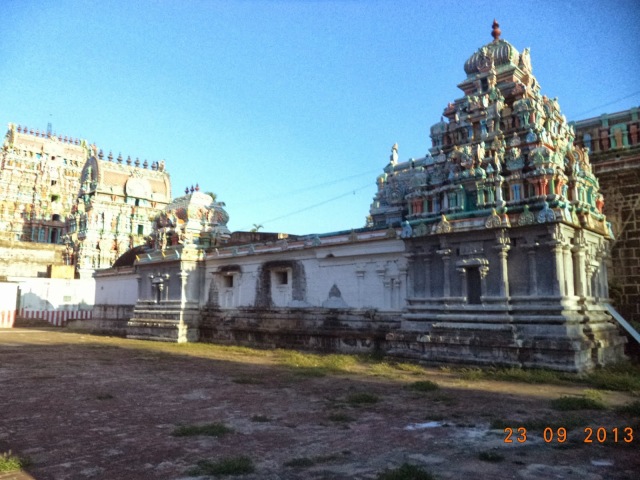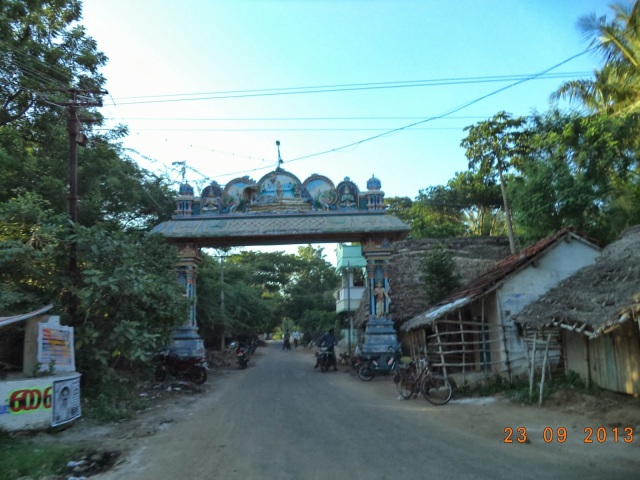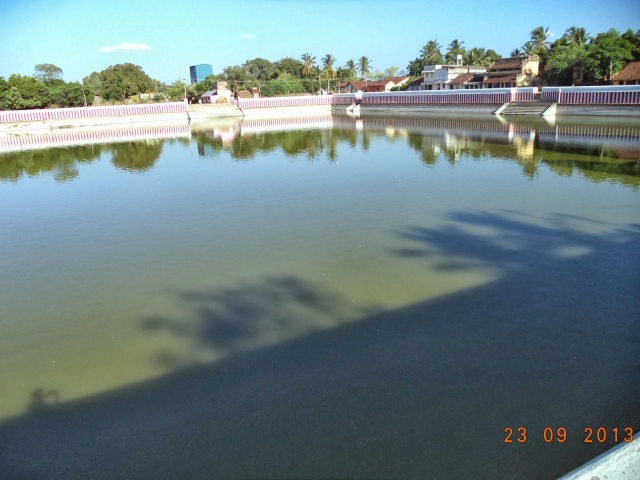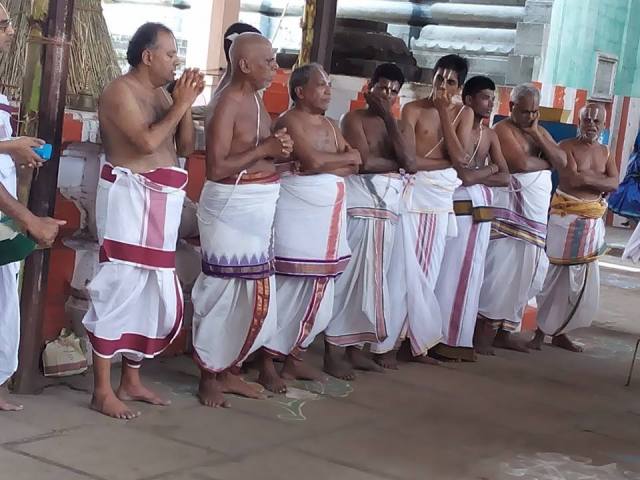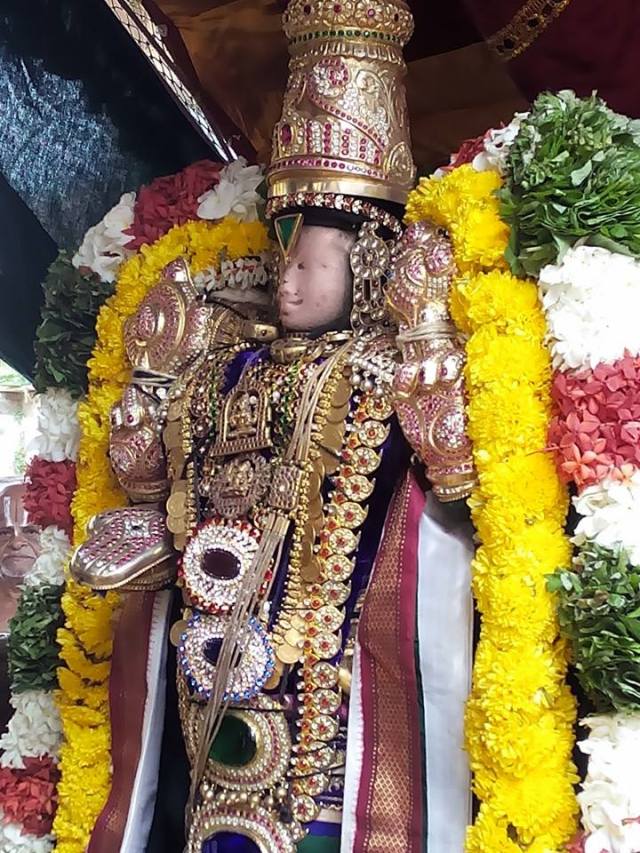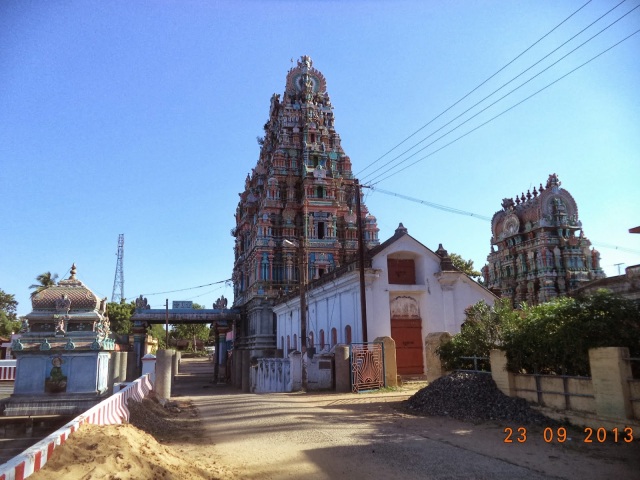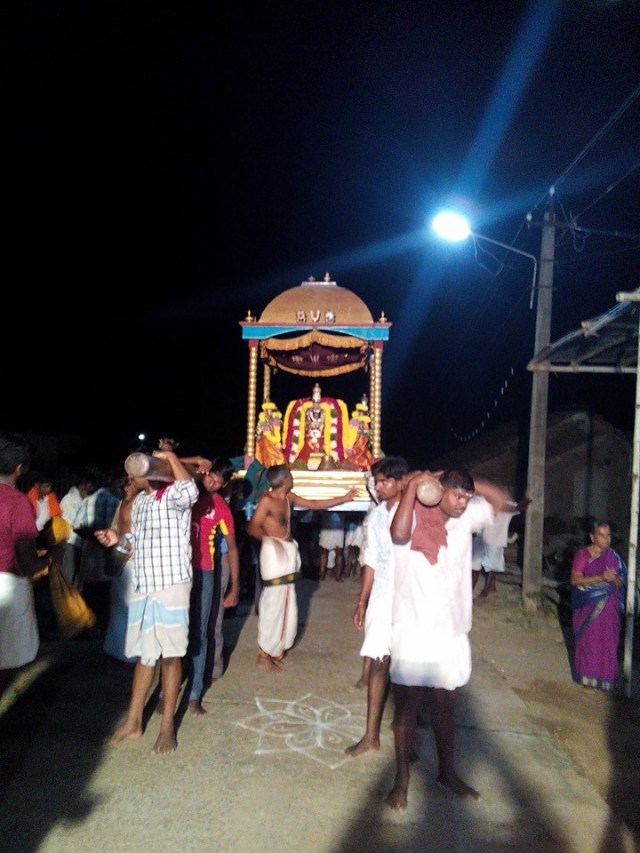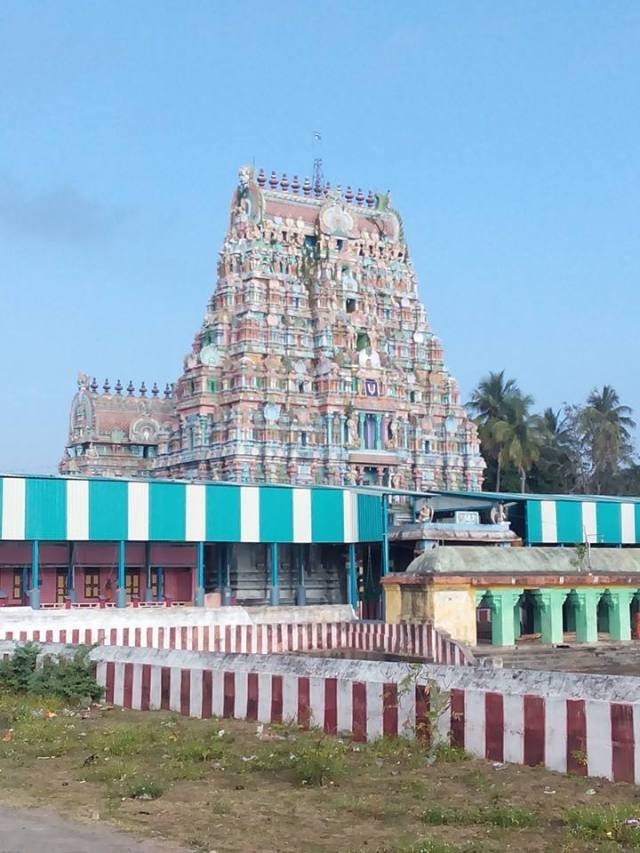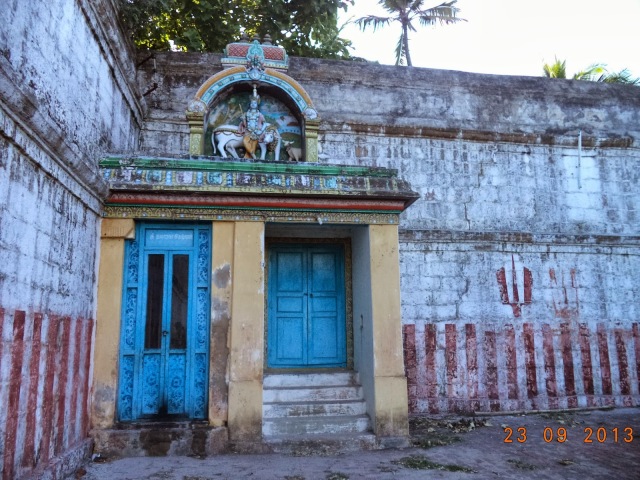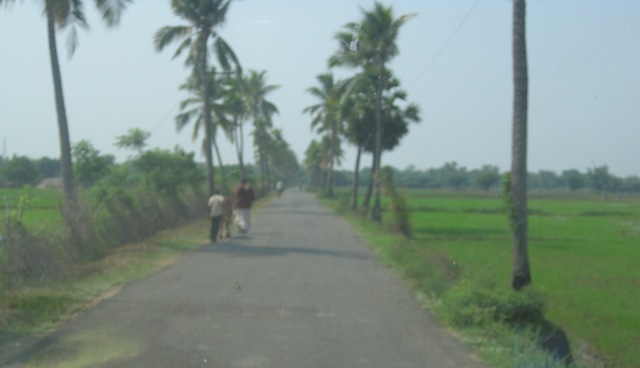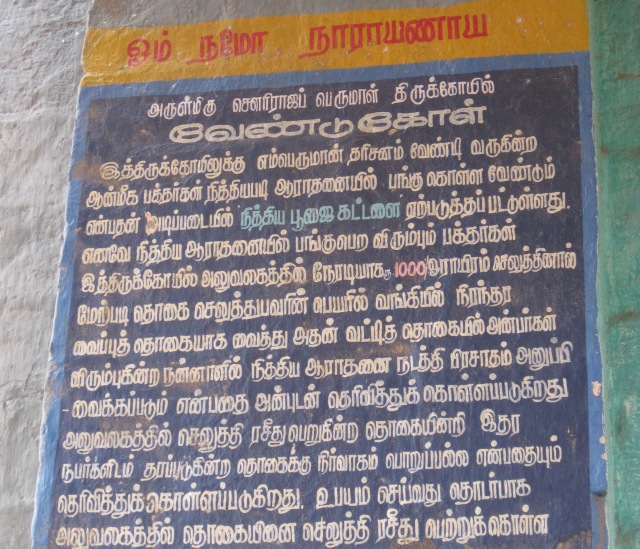Temples around Bangalore (Draft)
Note: This is only a draft and may take many months to complete.
The temples in the following routes are being compiled and I will release as and when I complete some routes. Please wait for the complete release of the posting to comment on any missing temples. I welcome your other comments and corrections, if any.
- Bangalore – Tumkur
- Bangalore – Magadi
- Bangalore – Kanakapura – Banasamudhra
- Bangalore – Doddaballapur (D.B.Pur) – Hindupur
- Neelmangala – D.B.Pur
- Bangalore – DevanaHalli – Chikkaballapura (C.B.Pur)
- Bangalore – Chennarayapatna – Hassan (Mangalore Highway)
- Bangalore – Anekal
- Mandya – Melukote – Shravanabelagula (SH 47)
- Bangalore – Kolar – Mulbagal (Chithoor / Chennai)
- Hoskote – Chinthamani – Madanapalle
- Nelligere – Kibbanahalli
- Mulbagal – Srinivaspur
- Hosur – Sarjapur – Hoskote
- C.B.Pur – Bagepalli – Somandevpally
- Bangalore – Hosur
- Kolar – Bethamangala
- Hoskote – Malur – Tekal – Bangarpet
Last Modified: 5th March 2015
Bangalore – Channapatna – Mandya – Srirangapatna (Mysore)
Big Banyan Tree at Kettohalli
The 400 years old Banyan tree is located at 28 kms from Bangalore, on the North-West deviation from Kumbalgodu
Sri Ramadevara Pada Temple
This temple of Lord Rama’s foot prints is located right on the Mysore road 4 kms before Ramanagara.
There is a road to Ramdevar beta (Ramagad) from here.
Ramdevar beta (Ramagad) at Ramanagar
Location: Ramanagar is located on the Bangalore- Mysore highway between Bangalore and Channapatna, 10 kms before Channapatna and 45 kms from Bangalore.
Ramdevar beta, popularly known as Ramgad, is 2.5 kms from Ramanagar town. You can reach this place by taking a diversion at Sri Ramadevara Pada temple, 4 kms before Ramanagar itself.
Ramangara is known as the silk town and is famous for silk market.
There are two temples on top of the hill, viz, Rama temple and Rameshwar temple.
There are about seven hills in 10 kms radius of Ramanagara, viz, Yatirajagiri, Sidilakallu Betta Shivaramagiri, Krishnagiri, Somagiri, Revanna Siddeshwara Betta and Jala Siddeshwara Betta. All these sites offer abundant opportunities for temples, trekking, rock climbing, camping and exploring the wilderness of nature and photo shooting.
Ramdevar beta is pictorised in the famous Bollywood film “Sholay”.
1) Sri Rama Temple and Rameshwar Temples
The two temples are on hilltop, about 30 meters apart with a natural pond called Rama Tirtha in between them. It is interesting to see water at such a height. There are about 300 steps to climb and there is a Hanuman temple after 250 steps.
Hanuman Gante (Bell) is a large metal bell, housed in a small tower that stands on a small hillock within the Ramadevara Betta (Hill), close to the two temples.
Behind the Rama temple, there is a rock called Homiakumbhi Bande. A flight of about 50 steps takes us to the top of this rock. It is believed that Kempegowda found a treasure at a place called “Naidile theertha” here.
The great Vaishnavite saint Sri Ramanujacharya is said to have visited this hill during his sojourn in these parts. As though to give credence to this event, the adjoining hill is called Yamiraja Betta.
2) Hanuman Bande
Hanuman Bande (rock) is another rock next to the main Ramadevara Betta (hill). The Hanuman Bande gets its name from the small Hanuman murthy placed at the foothills of this rock.
One can get a panoramic view of Ramanagara from atop this large rock. Small rock-cut steps lead the way to the top of this rock. Metal railings are provided at several places to climb the rock with ease.
3) Kharkhaane Bande
This hillock is about 3000 feet above the sea level, 450 steps and three doorways that lead to the rock carvings of Venugopal, Ganapathi, Maruthi and Garuda and many inscriptions.
4) Saptarishi Hill
This hill, next to the Ramdevar beta, is believed to have harbored 7 saints who were later turned into huge rocks which stand to this day
5) ‘Sholay’ Spot
Place where the famous movie “SHOLAY” was shot, starring Amitabh and the unforgettable Gabbar singh.
Sri Arkeshwara Temple at Ramanagar
The temple is located on the banks of the river Arkavati. It was built by the Vijayanagara empire and renovated later by Krishnaraja Wodeyar III. One can see the small temple of Venugopalaswamy on the right and Prasanna Ambadevi shrine on the left. The annual Jatra held on Phalguna Shudda Poornima is very auspicious.
Janapada Loka
Location: 3 kms after Ramanagar on the highway
“Janapada Loka” or “Folk (arts) world” is an institution that is dedicated to preserving and propagating the rural folk culture of Karnataka. It is set up on a 15-acre area where rural milieus from Karnataka have been recreated. It also houses a wide array of rural artifacts depicting the essence of folk literature, music, dance, festivals, sculpture and lifestyle. It is the brainchild of the folklore enthusiast, the late H. L. Nage Gowda.
Janapada Loka celebrates many folk cultural events throughout the year, out of which “Lokotsava” during Feb-March is the most anticipated one.
Sri Revana siddeshwara (SRS) Betta (Temple)
Location: Around 12 kms South-East of Ramanagar and equi distance from Ramanagar, Channapatna and Kanakapura
SRS Betta consists of a massive monolithic rock surrounded by beautiful hilly region
Sri Revanna Siddeshwara, believed to be the re-incarnation of Jagadguru Sri Renukacharya the founder of “Veerashaiva Siddantha” (Shaiva Dharma) with a slogan “sarve janaha sukhino bhavanthu”, is said to have performed penance at the sacred cave hill which is named after him. The murthi of Sri Revana siddeshwara is in the cave. Devotees have to sweat it out before reaching the spot and it is really a nice place to visit during winter season.
There are temples in all the 3 tiers of the hill.
Foot of the hill
- Sir Renukamba Temple
- Kondadha Basavana Temple
- Dasoha Bhavan
- Guest Houses, etc
Middle of the hill
- Bheemeshwara Temple Complex
- Holy Pond
Top of the hill
- Sri Revana Siddeshwara Temple
- Holy Pond
- Rudra Muneshwara & Siddarameshwara Mantapas
Sri Veera Bhadra Swamy TempleThe temple on a small hillock is located at 2 kms South East of SRS Betta.
Links:
Location
Sri Anjaneyar temple at Kengal
The temple is located at Vandaraguppe village, 7 kms after Ramanagar and 3 kms before Channapatna while going from Bangalore.
”Kengal” in Kannada means ‘red stone’ and the Hanuman murthy emerged as Swayambu from the red rocks to fulfill the wishes of Sage Vyasar, author of Mahabharatha, perfectly as per his imagination including the moustache. It is very seldom for Lord Hanuman to sprout a mustache. Lord Hanuman is 5.5 feet high and is usually decorated sindhoor in bright orange-red.
The temple was built by Hoysala kings but after their era, the temple almost reduced to rumble. Few decades ago, Ex Karnataka Chief Minister Sri Hanumanthaiya, renovated the temple and brought to limelight again.
A fascinating phenomenon about this temple is that the Lord seems to be turning Himself over the years! Few decades ago, He was facing North (sideways) and over the years He now looks East (straight).
Also, only on the Makara Shankranthi day (Jan 14/15) i.e., the first day of Uttarayana, the early morning sun rays falls directly on the murthy.
This is a popular prarthana sthalam for childless couples and people with other illnesses.
The deity is very powerful and vested with a lot of energy. Hence people with ill intentions cannot withstand the deity; it triggers vibes that can be harmful. The lord is merciless in punishing the mean & bad but He blesses and answers the good ones on the first visit to the temple itself.
Sri Sanjeevaraja Hanuman temple at Hosahalli
The temple is located at about 4 kms from Kengal and 4 kms from Channapatna
This is one of the Hanumaan temples installed by Sri Vyasateertharu and was constructed during the period of Vijayanagar Empire.The murthy of Hanuman is in standing position and is believed to be having healing powers, hence is called Sanjeevaraya.
Channapatna
The town is world famous for its wooden toys and Channapatna is known as “Gombegala Ooru” (toy-town) of Karnataka. The origin of these toys can be traced to the reign of Tipu Sultan who invited artisans from Persia to train the local artisans in the making of wooden toys. This traditional craft is protected with a “GI tag” under the World Trade Organization. The visiting U.S Presidents and other international dignitaries either visit here or are gifted these wonderful toys.
1) Sri Honnappa Shiva TempleLinks:
Location
2) Sri Lakshmi Narayana Swamy TempleLinks:
Location
3) Sri Neelakandeswarar TempleLinks:
Location
4) Sugreeva TempleIt’s rare to find temples for Sugreevar and this is one such.
Links:
Location
Doddamallur
1) Shree Apprameyaswami Temple / Shree Ambegalu Krishna Sannidhi (Navaneeta Krishna)
Location: The temple is located on the highway, immediately after the Channapatna town while going from Bangalore.
Significances:
- Legend has it that Lord Rama stayed in this “Dakshina Ayodhya” for many years
- Though the prime deity of the temple is Lord Sri Aprameya Perumal, the temple is highly popular for the crawling Navaneetha Krishna in a separate shrine in the praharam. He is known to be powerful for granting the boon of children to the childless couples.
- The great composer Purandara Dasa composed the famous krithi “Jagado ddharana Adisidalu Yashoda” at the Purandaradasa Mantapam here on seeing the Navaneetha Krishna.
Legend:
- Legend has it that Lord Rama stayed in this “Dakshina Ayodhya” for many years and during this time, he worshipped Lord Aprameya. Hence Lord Aprameya is also known as Sri Ramaprameya. Lord Rama also performed homams and other rituals in this place and even to this day, there are remnants of the structures where He conducted the Yagnams. In Kshetra Mahatmiyam Kandam of Brahmanda Purana there is a description of Lord Aprameya in twelve chapters.
- Visited by Sri Jayatheertha/ Sri Ramanujacharya / Sri Yagnavalkya Maharishi
Shrines:
- The moola moorthy of the temple is Lord Sri Aprameya Perumal made of Saligrama Shila. ’Pramey’ means measurable quantity, ‘Apramey’ means immeasurable and since His mercy is of immeasurable quantity, He is called so. His upper two arms are holding the Shanka and Chakra and in the lower two arms are the Gadha and Padma in the Abhayahastam mudra.
- The Uthsavar is a replica of the Moolavar accompanied by Sri Devi and Bhoo Devi thayars and is extremely beautiful. They are accompanied by a Uthsavar Moorthy of Lord Ramanuja.
- Sri Aravindavalli Thayar is present in a separate shrine. As Goddess Maha Lakshmi was born in a Lotus flower in Vishnu Theertham (to the North West of the temple), She is known as Aravindavalli. She is seated in the Padmasana posture on a Lotus. Thayar is giving darshan with herchaturbhujams, holding Lotus flowers in the two upper hands and blessing devotees with two hands in Varadha and Abhaya postures. In the same Sanctum we can find the murthies of Sri Andal Thayar and Sri Desikan.
- Though the prime deity of the temple is Lord Sri Aprameya Perumal, the temple is highly popular for the crawling Navaneetha Krishna in a separate shrine in the praharam. It is believed that Sage Vyasa installed this Vigraham. In this rare posture, Baby Krishna is crawling on a Garuda Peetam holding His favorite butter in His right hand and is adorned with a lot of jewels like amulets, chains, necklaces, anklets and tiger claws dollar. He is known for granting the boon of children to the childless couples and the loads of silver and wooden cradles in the sannidhi offered by the couples desirous of begetting offspring stand testimony to this fact.
Temple:
- There is evidence that this temple existed even before Lord Ramanuja’ s Digvijayam in Karnataka
- The temple of Aprameya was built in the 11th century by Chola emperor Rajendra Simha and the oldest inscription is about a donation in the year 980.
- The specialty of the temple is, it is standing on sand and not on any solid foundation.
- Standing outside the temple, one can see the towering and beautiful Raja Gopuram. Built in the dravidian architectural style, one finds sculptures of the Dasavataram adorning the side walls of the Raja Gopuram. The Maha Dwaram is 30 feet high. Opposite the Maha Dwaram is the tall Deepa Sthambam made from a single stone which vies with the Maha Dwaram in height, at 30 feet.
- Facing the Rajagopuram outside the temple, is the Purandaradasa Mantapam, from where it is believed that the great composer Purandara Dasa composed the famous krithi “Jagado ddharana Adisidalu Yashoda” which immortalizes his ecstasy on seeing the Navaneetha Krishna here, for generations to come.
- The Brahmotsavam of the temple falls in the months of April/May and the architecture of this temple is such that the sun rays during sunrise fall directly on the sanctum sanctorum of Sri Aprameya Swamy during this period.
- The temple is very favourite for Sri A M Rajagopalan of “Kumudham Jothidam” and recommends this as a pariharam for childless couples every now and then in his magazine.
2) Sri Rama Temple
Lord Rama temple is just a few feet away from the Lord Aprameya temple.
The specialty of this Lord Rama is, He and His consort Sita Devi are sitting while Lakshmana is standing on the left side. Lord Anjaneyar is worshipping the feet of Lord Rama.
In a separate shrine, Lord Venugopala is present with four arms (which is unusual) with upper two arms holding the Shanku & Chakra and the the lower two arms holding the flute.
In another shrine, Lord Sudharshana and Lord Lakshmi Narasimha are present back to back which is very rare (Normally you will find only Narasimha without Lakshmi in Sudarsana shrine).
3) Sri Nadi Narasimha Swamy Temple
The temple is located 1.5 kms north of Doddamallur on the bank of Kanva river among the sugarcane fields, coconut orchards and the scenic beauty of the amazing countryside
According to the local legend, one night Lord Narasimha swamy appeared in the dream of Sage Kanwa and directed him to build this shrine for him.
Local people carry one or two unhusked coconuts and circumambulate 48 times around the shrine chanting the deity’s Moola Mantra. The coconuts are then tied to the two parallel iron rods in front of the shrine.There is a strong belief that this ritual fulfills their wishes with no failures absolutely.
There seems to be remains of an underground tunnel that runs all the way to the main entrance of the temple at the nearby village, Abbur. It is believed that King Saraangadaara, whose palace was situated in Abbur visited this temple through this underground pathway.
In the praharam, Hanuman is seated in meditation posture and Dasha Avathara of Vishnu are also present.
Sri Yoga Narasimha Swamy Temple at Kurunegere
Location: After about 3 kms from Doddamallur in the highway, we have to take a Southward deviation for another 4 kms to reach the temple.
The temple is being considered as equivalent to Ahobillam.
When Saint Kanva was doing penance in the forest here, he got the vision of Lord Yoga Narasimha in a sthambam in a hillock and built this temple with the help of Kadu Goola tribals. Then they started doing business making this Lord as their business partner. Even now, some descendants of the ancient Kadu Gollas live here and conduct yearly festival to offer Swami’s share in business profit that day.
Sri Aadhi Vyasaraya mutt at Abbur
Location: Abbur is located at 6 kms North of Channapatna
This 16th century mutt is the moola mutt of the Kundapura Vyasaraja Mutt.
Abbur was the Karya Ksethta of Sri Sri Brahmanya Tirtha and this is his Moola Brindavana. Also there are Brindavanas of Mukhyaprana Devaru, Vyasarajaru and many more sanyasis of Sri Kundapur Vyasaraja mutt parampara.
Sri Sri Brahmanya Tirtharu was responsible for the birth, growth, vidya, ashrama of the famous Sri Vyasarajaru.
Sri Sri Purushottama Thirtharu, the Guru of Sri Sri Brahmanya Thirtharu, entered the cave called “Purushottama Guhe”, about 3 kms from Abbur and never returned. It is believed that Sri Sri Purushottama Thirtharu is still there doing tapassu.
Miracles by Sri Brahmanya Thirtharu
- Birth of Sri Vysarajaru – Once when Brahmanya Tirtharu was on tour in Bannur, Raamacharya, an aged brahmin died on his way to Gangasnaana. Ramacharya’s wife wanted to do “Sahagamana” with her husband and came to Swamiji for seeking his permission for doing so. But Brahmanya Thirtharu, even before her seeking permission told her “Dheerga sumangalee bhava”., “suputravatee bhava”. It was a surprise to all the pandits that a widow was being blessed with the boon of dheerga sumangalitva. But Swamiji told “It is told by Gopalakrishna Devaru, and he will survive and he will be shataayushi and would have two children”. Saying this, Swamiji gave her “mantrodaka”. As soon as she did the “prokshana” of Mantrodaka on the dead body, Ramachar got up as if getting up from sleep. Afterwards, Sri Vyasarajaru was born to the aged parents and was handed over to the Mutt.
- Malur – Channapatna was ruled by a King called Thimmarasa who had a son named Sarangadhara. When the King’s wife died, he married another young Rajakumari, though he was aged. The Rajakumari was not happy with the sex life and so invited Sarangadhara (her husband’s first wife’s son) for sex. When Sarangadhara refused, she made a false claim that Sarangadhara tried to rape her. The King then ordered to cut his son into pieces and throw into the Kanva River. Sri Brahmanya Tirtharu happened to visit the Kanva river for his “ahneeka” and saw the Prince cut into pieces. Realising the facts, Swamiji did the “abhimantrana of Mruthike” on the body of the prince and he gradually developed his legs & arms and became normal. It the place which is called as Malur named after the incident.
- When Sarangadhara came to power, he requested Sri Brahmanya Tirtharu to accept something as a token of gratitude. The saint did not want anything except the murthy of Sri Vittal be kept in the treasury. Even now this murthy is being pronounced as “BrhamaNya KaraaRchitha Sri Vittala Devaru”.
- He did the “Bara Parihara” (Famine relief) in Vijaya nagar kingdom by chanting Parjanya Japa; did the “Nrusimha Dwajastamba” stapane in Brahmanyapura and did the pratistapane of Mukyaprana in Brahmanyapura along with Sreepadarajaru and Sri Vyasarajaru.
Purushottama Guhe
The place is about 1.5 kms from Abbur en route Kanva dam and reservoir
This is where Sri Purushottama Thirtharu, the Guru of Sri Sri Brahmanya Thirtharu, entered the cave and never returned. It is believed that he is still there doing tapassu.
Kanva Dam and Reservoir
The dam is about 2 kms further from the Purushottama Guhe and about 9 kms from Channapatna
Kanva Dam is a minor irrigation project dam built in 1946 across the Kanva River, The Kanva River (a tributary of the Shimsha River and Cauvery River) is named after the sage Kanva, who is believed to have lived in the caves in the mountains and forests around the dam at the time of Ramayana.
This is one of the very unique & very rare dam in India because of the use of siphon technology as against conventional dam which uses gates. Its unbelieveable that this dam has no gates at all but still it never poses any threat during heavy rains. A siphon spillway in a dam uses the siphon effect to increase the flow rate. A normal spillway flow is pressurized by the height of the reservoir above the spillway whereas a siphon flow rate is governed by the difference in height of the inlet and outlet.
Brahmanyapura
Brahmanya Pura is a small village at around 4 kms East of Channapatna.
Just before you reach Channapatna from Bangalore, you can see a big lake (dried out) on the left hand side with railings on both sides. Just after the lake, take a left turn and go for about 3 kms and you will see the Hanumantharaya temple, with the garuda kambha at the center of the road.
1) Sri Hanumantharaya TempleLinks:
Location
2) Kambada Narasimha devaru
This temple is located on a hillock about 200 meters from the Garuda kambha.
The legend is that Sri Brahmanya Theertharu used to go from Abbur to this place every day to worship and he had a small pond dug out at Brahmanya pura to help him out for ahnika.
3) Sri Avatara mukhya Prana devara Temple
Take a right turn at Garuda kambha and travel about 1 km to reach Brahmanya Pura.
Sri Brahmanya Teerthru, Sri Vyasa Teerthru and Sri SriPadarajaru together installed this murthy.
The murthy is very beautiful and is a combination of Hanuma, Bheema and Madhwa. The hairstyle on the head represents Shri Madhwacharya, the murthy is carrying Soughandhika Pushpa which represents Bhima and the tail & face represents Hanuma.
Sri Dodda Beereshwara Temple, Hosurudoddi
Location: The temple is about 6 kms from Channapatna; At Byrapatna, 4 kms after Channapatna on the highway, we have to take a North way deviation for another 2 kms to reach the temple.
Halumata (milk), Kadumata (forest) and Jenumata (honey) are the 3 sects of Kurubas – who are traditionally Hindu shepherds. Kuri is the Kannada word for sheep.
The Gods they worship are Beereswara and Mailingeswara. Like the Gowdas of Anneswara they also build small personal temples on their land and like the Gowdas they are their own pujaris or priests. All the people who belong to a particular temple are like brothers and sisters and they cannot marry. You must get a girl from another temple. This is a bit like the Gothra system. Same Gothra marriages are also not allowed by tradition.
This the temple of Lord Shiva of all kuruba communities. The temple has good history and situated with 45 acres of field around the temple.
The temple remains open on Every Sunday, Monday, Thursday and on all the Hindu Festivals.
The last day of Navarathri Festival of Dasara is famous.
Sri Narasihmaswamy Temple at Narasihmaswamy bettaLocation: At about 7.5 kms from Channapatna after Mathikete on the highway, we have to take a South side deviation for about 4.5 kms to reach the temple on the hill.
Links:
Location
Srinivasa Perumal Temple at Marchanahalli or Ramanujapuram
Location: Ramanujapuram is 3 Kms from Kurunegere; From Belekere on the highway, this is located at 4 kms Southward deviation.
There is kalyani (temple tank) which is similar to Melkote one at the entrance to the village. On the banks there is beautiful Sri Anjaneya moorthy.
The Perumal temple is about 200 meters from the Kalyani.
The Lord Srinivasa vigraham is very small and was installed by Sri Ramanuja himself. He is showing Abhaya hastham and Kati hastham. There is no Thayar Sannidhi since Lord Srinivasar is having His Thayar in the Vrashasthalam.
Nammalwar and Ramanujar are present.
The Main Gopuram is in ruins now.
This is a township established by Udayavar Sri Ramanujar when he was doing Digvijayam of Karnataka. Main person instrumental in setting up this township was Ananthalvan who was doing Pushpa Kainkaryam to Lord Srinivasar as per the instructions of Bhagavath Ramanuja.
This was once a well planned township with about 200 Brahmin families and a well connected Water Supply system. Every house was connected with two water supply canals. One canal was madi / Acharam (for cooking and Pooja etc) water and the other one was for regular use.
Contact: Sri. Narayana Iyengar @ 98441 26359
Kokkare Bellur Birds Sanctuary
After Nidaghatta (close to Maddur) off Bangalore – Mysore-highway, a 12 kms Southward diversion will take us to this village.
There are many storks that arrive here around the Jan-end / Feb time frame and can be seen in very close proximity. The villagers here protect the birds.
Sri Beereshwara Temple at Arunhalli / ArunalliThe temple is located at about 1 km from the Kokkere Bellur Birds Sanctuary.
Links:
Location
Satyagraha Soudha at Maddur
This is located 3 kms before Maddur town while going from Bangalore
Satyagraha Soudha Shivpura is a magnificent monument to mark the freedom struggle at Maddur.
When the hoisting of the national flag was banned by the British, it was here that the freedom fighters led by Gandhiji established the right to hoist the same. It is a monument of national importance and worth a visit.
Maddur
Maddur is located at 64 kms from Bangalore, situated on the right bank of the Shimsha river.
According to one version, Maddur is a corrupted version of Marudur, an ancient name.
Another version is that Maddur derives itself from the word ‘maddu’ (gunpowder) as it was a store house for explosives and gunpowder. The town flourished till the end of the 18th century and it is learnt that there was a fort here which served as the stronghold of a succession of Mysore rulers followed by Hyder Ali and later destroyed by the British. The crumbling fort walls are all that remain today.
Maddur Vada is a type of vada very special of this town. Onions and Rava help to give the Maddur vada its distinctive flavour. It seems the flour for this Vada is prepared using onion juice instead of water.
1) Shree Madduramma templeThe presiding deity of the entire village is Goddess Maduramma.
Links:
Location
2) Sri Ugra Narasimha Swamy Temple
The temple built of black stones in Hoysala period with later additions of Vijayanagara.
The temple is under the control of State ASI
The Ugra Narasimhar here is very unique and has 8 hands with 3 eyes depicting the killing of Asura Hiranyakashyap. Also Soumya Nayaki and Narasimha Nayaki, the wives of Lord Narasimha are present here.
It is believed during the end of Dwapara yuga, Arjuna wished to see Sri Krishna in Narasimha avatar darshan. Lord Krishna felt the avatara would be too powerful to see directly and created this 7 feet tall murthy in shining black stone. Maddur is also referred to as Arjunapuri in this connection.
The temple has sannidhis for Sri Rama, Sita, Lakshmana & Hanuman, Sri Yashoda Krishna and Sri Srinivasan, and alwars.
The inner walls are decorated with attractive frescoes.
As Sage Kadamba meditated here for a long time, the Shimsha river nearby was also known as Kadamba River
3) Sri Varadharaja Swamy (Nethra Narayana) Temple
The Varadaraja temple is built in Chola structure with a 16 feet tall Varadaraja murthy.
Hoysala King Sri Vishuvardhana’s mother was suffering with eyesight problem. Raja guru Sri Ramanujacharya advised him to take her to Sri VaradaRaja temple at Kanchi. As his mother was too old to travel to Kanchi, the King established this temple of Sri Varadharajar and got his mother’s eyesight problem rectified, due to which He is also famous as KanchiKanvaradaraja swamy / Nethra Narayanar.
The specialty of the Varadaraja murthy here is that there are rich carvings even behind the murthy and so He is also referred to as Allalanatha. There is a saying “Ella devara mundhe nodu; Allalanathana hindhe nodu” meaning “See all the deities from the front, see Allalanatha from behind.”
4) Sri Pattabhirama temple
The temple is very close to Sri Varadhraja Swamy Temple
5) Sri Hole Anjaneyya Swamy Temple
This is one of the Anjaneya Swamy moorthies installed by Sri. Vyasarayaru of 16thcentury and is situated on the banks of river Shimsha.
Two fingers of this murthy are very long and are holding sougandhika flower; His tail has bells and He has sun and moon on His head.
The temple is considered very powerful and as per the purohit of this temple different sounds of conch and bells are heard during lunar eclipse in closed doors of the temple.
There is a strong belief that an unique prayer of holding 1 rupee and 25 paise coins in hand and then placing them at Lord’s feet will grant their wishes.
Devotees visit this temple on Tuesdays with 5 bananas and do 5 pradikshanas for their well being.
Sri Atma Lingeswara Temple at Hanumantha nagar15 kms South West of Maddur
Links:
Location
Hosa Budanur
Location: On the highway, 12 kms after Maddur and 4 kms before Mandya while going from Bangalore
The two beautiful temples, Sri Kasi Visweswara and Sri Anantha Padmanabha Swamy temples were built around the 12-13th century, during the reign of the Hoysala King Vira Ballala III. These temples have been renovated by the ASI to their old structure.
1) Sri Kasi Visveswara TempleLinks:
Location
2) Sri Anantha Padmanabha TempleLinks:
Location
Travelogue on both the temples is available
here
Sri Bheereswar Temple at Ummada halliThe temple is located at about 1 km from Hosa Budanur
Links:
Location
Sri Vaidyanatheswara Temple at Vaidyanathapura
The temple is located at about 3 kms South of Maddur
The temple of God Vaidyanatheshwara was built by the Hoysalas with an inscription dated 1406 AD.
God Vaidyanatheshwara is considered to be very powerful.
Mandya
1) Balmuri Ganapathy TempleLinks:
Location
Sri Bheereswar Temple at Sathanur The temple is located at 4 kms North of Mandya
Links:
Location
Sri Tandaveshwara Temple at HolaluThe temple is located at about 5 kms North West of Mandya
Links:
Location
Karighatta Venugopalaswamy betta
While going from Bangalore, about 2 kms before Srirangapatna on the highway, we have to take a left side diversion for about 2 kms. There is motorable road to the hill top.
The name Karighatta translates to “Black Hill” in Kannada. The deity here is called “Karigirivasa”, and “Bairagi Venkataramana”. The epithet ‘Bairagi’ for this deity is derived from the fact that when alankara is done to the deity, the deity looks like a Bairagi (mendicant). The hill stands at a height of 2697 feet above sea level. It supports dry scrub jungle and many tamarind and gooseberry trees are found around the temple. A small river, Lokapavani, a tributary of Kaveri flows by the hill and on the other bank of the river the famous Triveni Sangamam of Srirangapatna is located.
Sri Manikarnika Gunja Sri Lakshmi Narasimha Temple at Baburayan Koppal (BR Koppal)
Baburayan Koppal is about 1 km just before Srirangapatna while going from Bangalore and this is an ancient temple.
SriRangaPatna Island
Srirangapatna is a small island formed by the branches of River Cauvery
Fort Complex
There are many ancient and popular temples inside the fort complex
1) Sri Ranganatha Swamy Temple
River Cauvery has formed three big islands on her journey from Talacauvery to join the Bay of Bengal Sea. The islands are Srirangapatna, Shivanasamudra in Karnataka and Srirangam in Tamil Nadu. All the three islands are pilgrimage centers with temples dedicated to Lord Ranganatha. These three temples are known as Adi Ranga/first Ranganatha at Srirangapatna, Madhya Ranga/Middle Ranganatha at Shivanasamudra and Anthya Ranga/Last Ranganatha at Srirangam.
The temple was built during the 9th century by the Kings of Vijayanagara Empire and then maintained and expanded by Hyder Ali, Ganga dynasty and Hoysala dynasty. There are many shrines inside the temple dedicated to other Gods and Gurus like Panchamukha Hanuman, Sri Krishna, Lord Srinivasa, Alwars and Vaishnava Acharya/Gurus of Vaishanava faith.
2) Sri Lakshmi Narasimha swamy Temple
The temple is located exactly opposite to Sri Ranganatha Swamy Temple
This is a historic temple built by Sri Kanteerava NarasimhaRaja Wodeyar
3) Sri Gangadhareshwara Shiva templeLinks:
Location
4) Sri Kshanambika Temple
Kshanambika temple though less popular than Nimishamba temple in Ganjam village nearby is no less powerful than Nimishamba. Kshanambika means the Goddess who grants the wishes in a Kshana / Second whereas Nimishamba is believed to grant wishes in a Nimisha / minute!
The main source of power here is the big Bijakshara Garbhita SriChakra with the mantras carved around on a black stone consecrated before the murthy of Sri Kshanambika. It gives out positive energy inside the temple and all around it. Due to this, Kshanambika is also known as Sri Chakra Vedanayaki Ammanavaru in the locality.
This ancient shrine is located inside an old temple complex of Jyothirmaheshwara Swami Devasthana.
Lord Shiva is also represented here in the form of a linga.
5) Parakala Mutt – Lakshmi Hayagreevar TempleLinks:
Location
6) Dasa Anjaneya Swamy TempleThe murthy is big here
Links:
Location
7) Sri Narayanaswamy templeLinks:
Location
Other interesting places inside the Fort:
Sri Nimishamba Devi Temple at Ganjam
This ancient and highly popular temple is situated on the banks of the river Cauvery at Ganjam village inside the Srirangapatna island at around 2.5 kms from the Fort complex on the road leading to Sangam.
“Nimisha” means a minute and the presiding deity Nimishamba is believed to grant our wishes in a minute. Nimishamba is none other than Goddess Parvathi, consort of Lord Shiva.
In front of Shree Nimishambha Devi, Bhooprastara, Krishnashila Sreechakra with very specialised Beejakshara Moolamanthra is installed in black stone which is very special and rare.
Lemon and Lemon garlands are offered to the Goddess.
Lord Shiva here is in the name of Lord Moukthikeshwara.
This is a place where a King Muktharaja had performed his penance (tapas).
Mummadi Krishanaraja Wodeyar, King of Mysore, built the temple around 400 years ago.
People from all over come here to have a darshan/blessings of the Goddess and also spend time near the river.
Sangama, Dodda Gosai Ghat and Pachima Vahini
There are 3 places on the banks of Cauvery river around Sriranga patna which are considered very sacred places for holy bath.
1) Sangama
The place is located at around 2 kms from the Nimishambal temple and 4 kms from the Fort complex, within the Srirangapatna island.
Sangama or Triveni Sangama is the reunion of the three branches of the River Cauvery forming the Srirangaptna Island. Apart from being frequented by tourists wishing to take a holy dip here to wash away their sins, the place is also thronged by those interested in picnicking. With the Karighatta (Black hill) in the backdrop, this is a picturesque spot ideal for picnic. There are coracle rides for adventurists also.
2) Dodda Gosai Ghat
The place is located at around 1 km from the Sangama and 5 kms from the fort complex, within the Srirangapatna Island.
This is another picturesque spot on the bank of Cauvery, ieal for a holy bath and picnic. Kasi Viswananthar temple is located here. Coracle rides are available for adventurists.
3) Paschima Vahini
The Paschima Vaahini section of the river Cauveri at Srirangapattana is very close to the Fort complex just outside the Srirangapatna Island. It is considered especially sacred; the pious come from far and wide to immerse the ashes of the departed and perform obsequies to their ancestors in these waters.
The temple complex here has murthies of Lord Ganesh and Lord Shiva along with various other deities and dwarpalakas. However most of them have been vandalised and submerged on the banks of the river bed. Some of the murthies date back to Ganga era and Vijayanagar era, additionally added by Mysore kingdom during 12th to 14th Century.
Note: There is also a Lakshmi Narasimha Swamy Temple
nearby
Other interesting places of Srirangapatna (outside the Fort complex):
Ranganthittu Bird Sanctuary
Ranganthittu Bird Sanctuary is a very small sanctuary comprising six islets on the banks of the Cauveri River and is located near the historic town of Srirangapatna.
A nice place for bird watchers.

